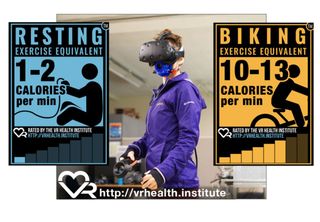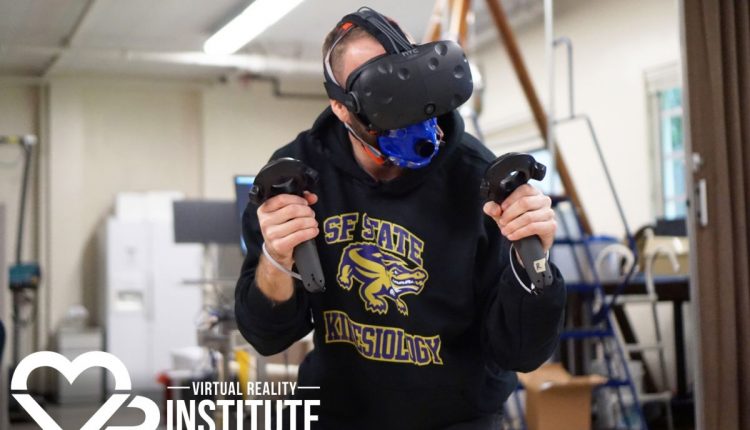VR Well being Institute Develops VR Train Score System

The VR Health Institute has developed a rating system called VR Exercise Rating, which compares the calories burned from VR games to common exercise activities such as walking, running, and swimming. It should come as no surprise that room-scale VR experiences can burn calories, but you might be surprised how much exercise you can really get from playing a VR game.

The VR Health Institute worked with the Department of Kinesiology at San Francisco State University to measure the oxygen consumption of 40 test subjects while they played different games to determine how many calories the average person would burn in a minute of play time. The results were surprising.
“Many of the games we reviewed are very intense exercises,” said Dr. Marialice Kern, senior VR researcher and chair of the kinesiology department at San Francisco State University. “At the same time, we noticed that the participants often don’t realize how much effort they are actually putting into. You expend energy without being aware of the pain. “
Dr. Kern’s observations are interesting and suggest that we may see a future where players are more fit than ever. Playing video games has traditionally been a sedentary activity, and many people spend several hours each day playing their favorite games. In 2014, Nielson published a report that said the average gamer spends 5.6 hours a week playing games. As VR grows in popularity, more and more players will get up and move around at least occasionally.
Dr. Kern’s observations also suggest that VR could have a positive impact on fitness engagement in general. Physical activity is paramount to a healthy lifestyle, but going to the gym can be a chore for many people. If you get as much exercise while playing a VR game at home as you do with the machines at your local gym, then why go to the gym?

The VR Health Institute’s VR Training Assessment has eight levels that represent different training intensities that you can compare to, including resting, walking, elliptical, tennis, rowing, biking, swimming, and sprinting. Games rated “rest” do not provide physical activity and would burn less than three calories per minute. Tennis rating games offer a brisk workout with 6-8 calories per minute. And you can expect a significant workout of more than 15 calories per minute from games with sprint scoring.
“I believe virtual reality will change what it means to go to the gym,” said Aaron Stanton, director and founder of the VR Health Institute. “Our goal is to quantify which games are most useful as part of a healthy lifestyle. For those of us who just suck in traditional exercises, like me, the diversity and engagement of VR is a game changer. I now believe that I will live longer and be fitter because I am a player, not in spite of everything. “
The VR Health Institute and San Francisco State University have tested 25 games to date, including Space Pirate Trainer (elliptical), Tilt Brush (walking), Audioshield (cycling), and Thrill of the Fight (sprinting). If you’re a developer and want a review for your game, you can submit your game for testing. However, the VR Institute said there is no need for developers to submit games as they are actively looking for titles to include. However, submitting a game can speed up the process.
Further information on the VR Institute and the VR Exercise Rating can be found on the website of the VR Health Institute.


Comments are closed.